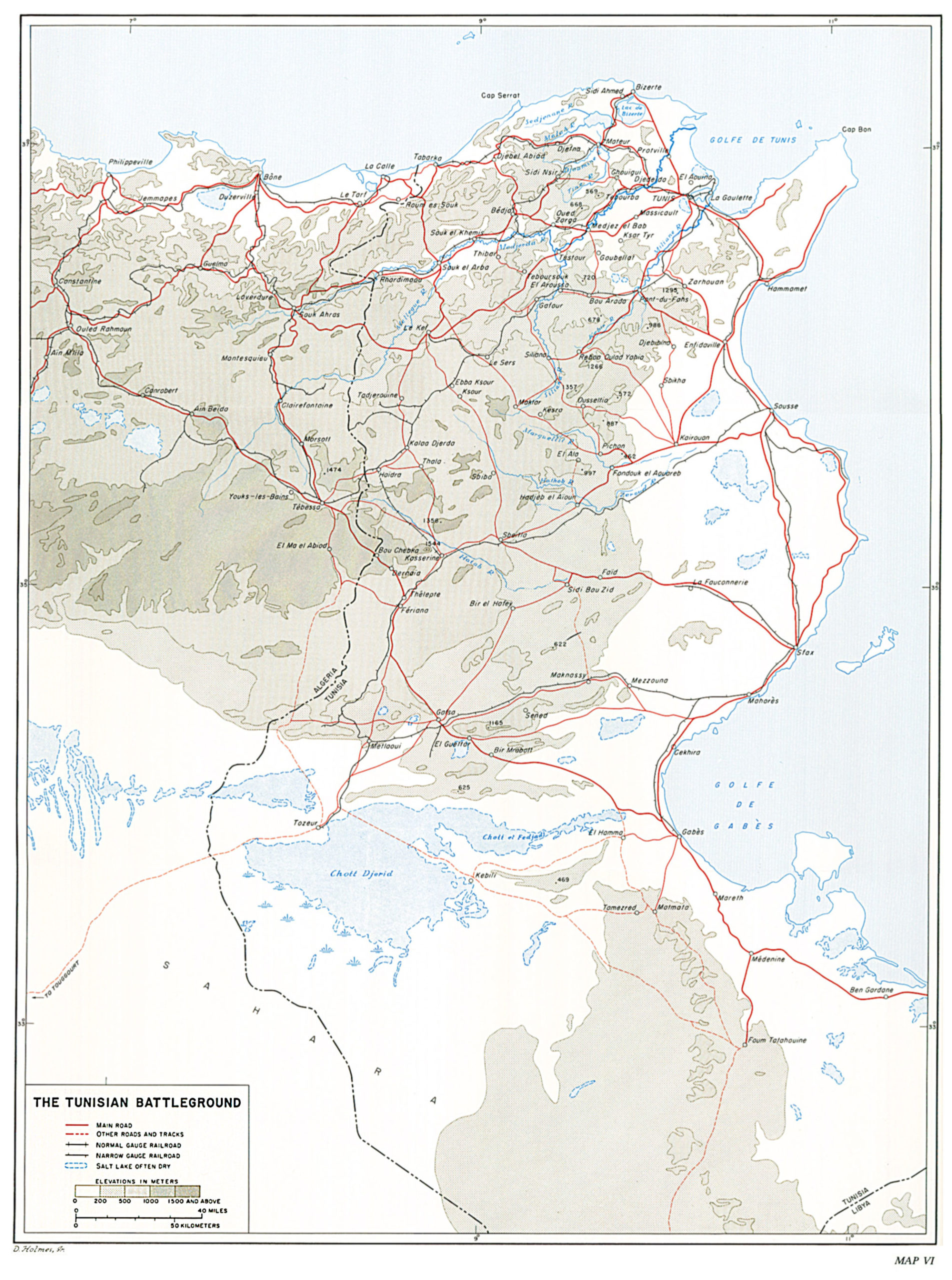Tunisia 1942 - 1943
The Tunisian Campaign is interesting in historical terms as the first where the British and United States forces were deployed together in combat. It was the first time in the Second World War that U.S. troops saw action in the European or Mediterranean theatres. Many of the problems and tensions that arose during this campaign were to continue through the campaigns in Sicily, Italy and North West Europe, but the Tunisian Campaign provided the foundation for the eventual success of the Allies in defeating the Axis. Key Allied commanders including EISENHOWER, BRADLEY, PATTON and CLARK all saw their first active service in Tunisia.
The countries of Morocco, Algeria and Tunisia were all French colonies in North West Africa. They aligned themselves with the Vichy French government following the defeat of France in 1940. Planning commenced in early 1942 for an expeditionary force capable of an amphibious landing in French North Africa. The experience of the Dieppe raid in August 1942 proved the challenges of assaulting defended coastline. With the entry of the United States into the war, it was important to begin deploying the large U.S. forces in combat, so French North Africa was the logical choice.
Landings were undertaken on 8 November 1942 at three locations. The Western Task Force consisted of U.S. formations that had sailed directly from the United States to Morocco. The Centre Task Force consisted of U.S. formations that landed at Oran and the Eastern Task Force comprised one British infantry division and one U.S. infantry division which landed at Algiers.
The Vichy French forces agreed to a ceasefire on 9 November, which left a ‘vacuum’ in Tunisia, with the French governor being even handed in his dealing with the Axis and Allies forces. On the same day as the ceasefire, German forces began landing in Tunisia. HITLER decided to send troops to Tunisia to avoid having the Afrika Korps surrounded, to maintain some control of the Mediterranean Sea, and to hold Tunisia to prevent an invasion of Italy. In the end, it was fruitless commitment of personnel and resources as far as the Axis powers were concerned. For the Germans, this was occurring at the same time as major battle at Stalingrad, and was a major division of resources. For example, the aircraft used to bring men and materiel into Tunisia were in consequence not available to supply the German 6th Army at Stalingrad.
The race was on to secure Tunis which the Germans won – just. Allied troops actually reached the outskirts of Tunis, but with insufficient strength to hold the ground. It led to a hard fought and bitter campaign that lasted until 13 May 1943. In the end, some 250,000 German and Italian troops were killed or captured, a defeat second only to that the Germans suffered at Stalingrad.
As this was the first deployement of U.S. forces in the West, an introductory paper on the United States Army in the Second World War is attached for your persual.
https://www.britishmilitaryhistory.co.uk/wp-content/uploads/sites/124/2020/09/The-United-States-Army-in-the-Second-World-War.pdf
Books on the Tunisian Campaign you may find of use are:
ATKINSON, Rick An Army at Dawn – The War in North Africa 1942 – 1943 (New York, Henry Holt and Company, 2002) [ISBN 0-8050-6288-2]
BLAXLAND, Gregory The Plain Cook and the Great Showman – the First and Eighth Armies in North Africa (Abingdon, William Kimber, 1977)
ROLF, David The Bloody Road to Tunis – Destruction of the Axis Forces in North Africa November 1942 – May 1943 (London, Greenhill Books, 2001) [ISBN 1-85367-445-1]
Further information on each of the units and formations can be found in the sections as below:


